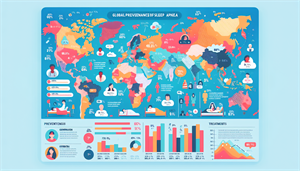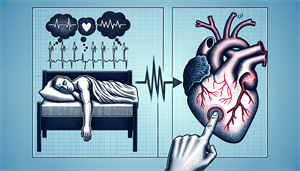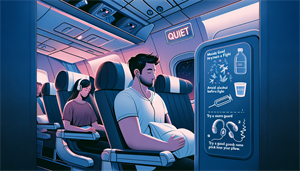
How Many People Have Sleep Apnea?
Sleep apnea looms as a silent epidemic, disrupting the slumber of nearly a billion people worldwide and posing serious health threats if left untreated. But what is sleep apnea, and how many people have sleep apnea? Understanding this condition and its prevalence is crucial for raising awareness and addressing the potential health risks it poses.
Key Takeaways
-
Sleep apnea affects nearly one billion individuals globally, but a significant number of these cases go undiagnosed, highlighting a need for greater awareness and medical attention.
-
Risk factors for developing sleep apnea include age, gender, obesity, smoking, and alcohol consumption, with elderly men and those with certain chronic illnesses being more prone to the condition.
-
Treating sleep apnea is crucial to prevent serious health risks such as cardiovascular disease and to improve quality of life, with positive airway pressure therapy (PAP) being an effective treatment option.
Global Prevalence of Sleep Apnea
Sleep apnea, including severe sleep apnea, is a pervasive sleep disorder that impacts nearly one billion individuals globally. Its sleep apnea symptoms, such as snoring, gasping, and choking during sleep, are more than just bothersome - they’re signs of a hidden health crisis.
The fact that up to 936 million adults worldwide are impacted by this common sleep disorder underscores the importance of sleep medicine in resolving this widespread issue. Health experts are deeply concerned about sleep apnea due to its increasing prevalence and potential impact on health, as well as the variety of factors that can cause individuals to develop this condition.
North America
In North America alone, over 30 million people grapple with sleep apnea. This figure includes those who experience sleep disordered breathing, a key symptom of this condition. However, despite the high prevalence, only about 6 million Americans have received a medical diagnosis of sleep apnea.
An estimated 30 million people suffer from undiagnosed sleep apnea, demonstrating that while sleep apnea is common in the region, it often goes unnoticed.
Europe
Europe too faces the challenge of a growing sleep apnea epidemic. Roughly 175 million Europeans are affected by obstructive sleep apnea. Many of these individuals develop sleep apnea and benefit from continuous positive airway pressure (CPAP) therapy as a treatment option, underscoring the need for more awareness and diagnosis.
The prevalence of sleep apnea varies significantly across European countries. Notably, the countries reporting higher rates of this sleep disorder include: Russia, Germany, France, Ukraine, and Spain. The occurrence of sleep apnea in Europe has shown a consistent increase over the past decade, making it a significant sleep disorder that requires attention and treatment.
Asia-Pacific
The Asia-Pacific region, too, faces an increasing number of sleep apnea cases. Here, the prevalence of sleep apnea varies dramatically, ranging from 3.7% to 97.3%, with many individuals remaining undiagnosed or untreated. Rising obesity rates, cardiovascular disease, and metabolic syndrome, among others, contribute to this increase. Changes in lifestyle, such as alterations in nutrition and diet due to economic growth, contribute to a rise in obesity, which is a recognized risk factor for sleep apnea.
Demographics and Risk Factors
Although sleep apnea can impact anyone, some demographics are more vulnerable than others. Age, gender, and weight, for instance, have a significant influence on the likelihood of developing sleep apnea.
Non-biological factors that can increase the risk of developing this condition include: Smoking, Alcohol consumption, Obesity, Hypothyroidism. Certain demographic groups, including elderly men, certain racial groups, and individuals with chronic illnesses, are more prone to sleep apnea.


